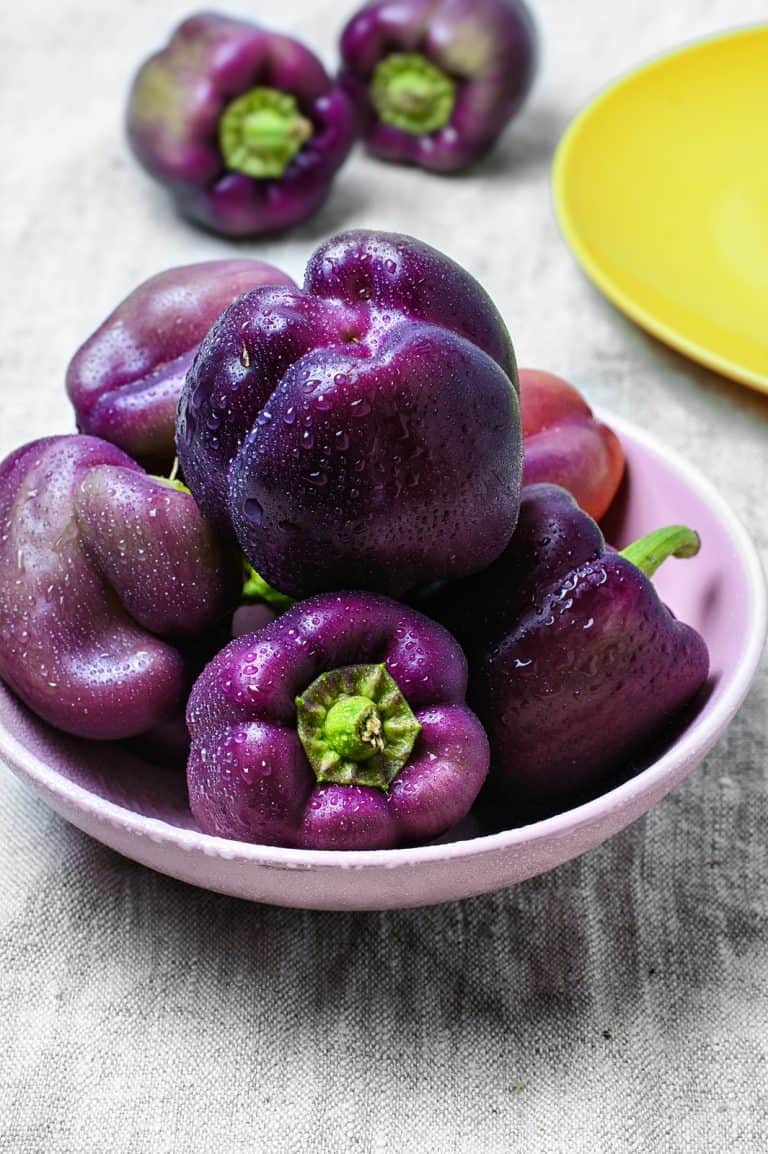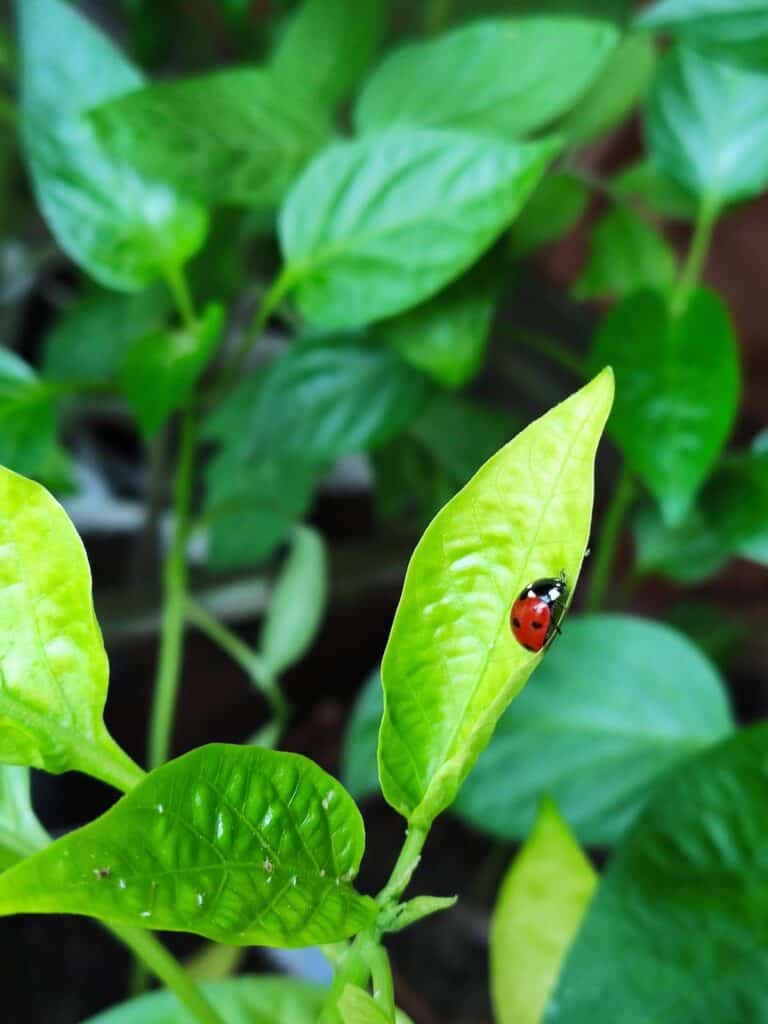How to safely can peppers to enjoy year-round
Canning is a time-honored method for preserving food, ensuring that fresh produce can be enjoyed year-round. If you’ve had a bountiful harvest of chili peppers, canning is an excellent way to store them.
However, safety is crucial in the canning process to prevent the risk of foodborne illnesses. This guide will walk you through the essential steps and methods for safely canning chili peppers.
Note: This article contains affiliate links, which means that if you click and purchase, we may earn a small commission at no extra cost to you. Thank you for supporting our content!
Understanding the Basics of Canning Chili Peppers
Canning is a method of preserving food in airtight containers to extend its shelf life. The process involves heating the food to destroy harmful microorganisms and enzymes that cause spoilage. When done correctly, canning can preserve the flavor, texture, and nutritional value of chili peppers.
Before starting, it’s important to understand that there are two primary methods for canning: water bath canning and pressure canning. The method you choose will depend on the type of food you’re preserving and its acidity level. For chili peppers, both methods can be used, depending on whether the peppers are pickled or plain.
Water Bath Canning for Chili Peppers
Water bath canning is a method used for high-acid foods. In this process, jars of food are submerged in boiling water for a specified time. The high temperature destroys harmful bacteria and creates a vacuum seal as the jars cool, keeping the food safe for long-term storage.
When to Use Water Bath Canning:
Water bath canning is suitable for pickled chili peppers, pepper jellies, or any pepper recipe with added acid (like vinegar or lemon juice) that lowers the pH to 4.6 or below. This method is not safe for plain, unpickled chili peppers, as they do not have enough natural acidity to prevent the growth of bacteria like Clostridium botulinum, which can cause botulism. Be sure to use a scientifically tested, such as ones provided by Ball Canning company or your local university agricultural extension.
Equipment Needed for Water Bath Canning:
- A large stockpot deep enough to fully submerge the jars.
- A canning rack to keep jars off the bottom of the pot.
- Canning jars with new lids and bands.
- A jar lifter for handling hot jars.
- A canning funnel to help fill jars without spilling.
- A bubble freer to remove air bubbles from the jars.
- You can buy kits containing all the necessary equipment (other than the jars and lids themselves).
Steps for Water Bath Canning:
- Prepare the Jars: Wash your jars, lids, and bands in hot, soapy water. Rinse well and keep them warm until ready to use. You can do this by placing them in the canner filled with hot water or in a warm oven.
- Prepare the Peppers: Wash the peppers thoroughly. Depending on the recipe, you may need to slice, chop, or leave them whole. If pickling, prepare the brine by boiling vinegar, water, and any spices or seasonings.
- Fill the Jars: Using a funnel, pack the peppers into the jars, leaving about ½ inch of headspace. Pour the hot brine over the peppers, ensuring the peppers are fully submerged.
- Remove Air Bubbles: Slide a bubble freer or a non-metallic spatula around the inside of the jar to remove any air bubbles. Adjust the headspace if necessary.
- Seal the Jars: Wipe the rim of the jars with a clean, damp cloth to ensure a good seal. Place the lids on the jars and screw the bands on until fingertip tight.
- Process the Jars: Place the jars in the canner, ensuring they are fully submerged in water. Bring the water to a boil and process the jars for the time specified in your recipe, adjusting for altitude if necessary.
- Cool and Store: After processing, carefully remove the jars from the canner using a jar lifter. Place them on a towel or cooling rack and allow them to cool for 12-24 hours. Check the seals before storing; any unsealed jars should be refrigerated and used within a few days.
Pressure Canning for Chili Peppers
Pressure canning is used for low-acid foods, including plain chili peppers. This method uses a pressure canner to achieve the higher temperatures necessary to kill harmful bacteria and spores that cause botulism.
When to Use Pressure Canning:
Pressure canning is the safest method for canning plain chili peppers, as they have a pH above 4.6. It is also necessary for canning mixed recipes that include low-acid ingredients, such as salsas without added acid.
Per the United States Department of Agriculture (2015),
“All low-acid foods canned according to the approved recommendations may be eaten without boiling them when you are sure of all the following:
- Food was processed in a pressure canner.
- Gauge of the pressure canner was accurate.
- Up-to-date researched process times and pressures were used for the size of jar, style of pack, and kind of food being canned.
- The process time and pressure recommended for sterilizing the food at your altitude was followed.
- Jar lid is firmly sealed and concave.
- Nothing has leaked from jar.
- No liquid spurts out when jar is opened.
- No unnatural or “off” odors can be detected.
Per the USDA, follow these guidelines for pressure canning peppers with a dial-gauge pressure canner
| Style of pack | Jar size | Process time | PSI for 0-2,000 ft altitude | PSI for 2,001-4,000 ft altitude | PSI for 4,001-6,000 ft altitude | 6,001-8,000 ft altitude |
| Hot | Half-pints or pints | 35 minutes | 11lb | 12lb | 13lb | 15lb |
Per the USDA, follow these guidelines for pressure canning peppers with a weighted-gauge pressure canner
| Style of pack | Jar size | Process time | PSI for 0-1,000 ft altitude | PSI for above 1,000 ft altitude |
| Hot | Half-pints or pints | 35 minutes | 10lb | 15lb |
Equipment Needed for Pressure Canning:
- A pressure canner with a dial or weighted gauge. They even make electric pressure canners now. Note, Instant Pots are NOT safe for pressure canning.
- Canning jars with new lids and bands.
- A jar lifter, funnel, and bubble freer.
Steps for Pressure Canning:
- Prepare the Jars: As with water bath canning, wash and keep the jars warm until ready to use.
- Prepare the Peppers: Wash and prepare the peppers according to your recipe. You may choose to blister and peel the peppers if desired.
- Fill the Jars: Pack the peppers into the jars, leaving 1 inch of headspace. If desired, add salt for flavor. Pour boiling water or broth over the peppers, maintaining the 1-inch headspace.
- Remove Air Bubbles: Use a bubble freer to remove air bubbles and adjust the headspace as needed.
- Seal the Jars: Wipe the rims, apply the lids, and screw on the bands until fingertip tight.
- Process the Jars: Place the jars in the pressure canner. Follow the manufacturer’s instructions for sealing the canner and venting steam. Process the jars at the pressure specified for your altitude and the type of canner you’re using.
- Cool and Store: Allow the canner to depressurize naturally before opening. Remove the jars and place them on a towel or cooling rack. Let them cool undisturbed for 12-24 hours. Check seals before storing.
Steam canning for peppers
Steam canning is a method similar to water bath canning, but it uses steam rather than boiling water to process the jars. In this method, jars are placed on a rack above a small amount of water inside a specialized steam canner. The jars are then processed using the steam that builds up within the canner.
Steam canning is only safe for high-acid recipes, where the pH is 4.6 or lower. This includes recipes like pickled peppers, pepper jellies, and other preparations that incorporate vinegar or citrus juice. It’s essential to follow tested recipes to ensure the correct acidity levels and processing times are used, as this ensures the safety of the canned peppers.
Steam canning is versatile and can be used with jars of various sizes, including ¼-pint, ½-pint, pint, and quart jars. However, like water bath canning, it should not be used for low-acid foods, as it does not reach the temperatures needed to kill all harmful bacteria.
Oven canning for peppers
Oven canning was a method used in the early 20th century, but it is no longer considered safe and should not be used for canning peppers or any other food. Despite its past popularity due to its simplicity and the absence of steam-related burns, oven canning poses significant safety risks.
Oven canning is ineffective at eliminating Clostridium botulinum spores, even in high-acid foods. This failure to properly sterilize the food creates a serious risk of botulism, a potentially fatal form of food poisoning.
In addition to the risk of botulism, oven canning carries the danger of jars exploding due to the dry heat. This can lead to severe injuries from cuts or burns. Because of these dangers, oven canning is strongly discouraged by food safety authorities and should not be used under any circumstances.
Safety Considerations
Botulism Risk:
Botulism is a serious illness caused by a toxin produced by the bacterium Clostridium botulinum. This bacterium thrives in low-oxygen environments, such as improperly canned foods. Both water bath and pressure canning methods must be done correctly to avoid the risk of botulism. Always follow tested recipes from reliable sources and adhere to processing times and pressures.
Altitude Adjustments:
Processing times and pressures vary depending on your altitude. At higher altitudes, water boils at a lower temperature, so you need to increase processing times or pressure to ensure safety. Refer to canning guides or the USDA recommendations to determine the correct adjustments for your location.
Jars and Lids:
Always use proper canning jars and new lids to ensure a good seal. Reusing old lids can result in improper sealing, leading to spoilage. Check jars for cracks or chips, which can prevent sealing or cause breakage during processing.
Storage and Shelf Life:
Properly canned chili peppers can be stored in a cool, dark place for up to 1 to 2 years. Check the jars periodically for signs of spoilage, such as bulging lids, leaks, or off odors. If you suspect spoilage, discard the contents immediately.
Alternative Methods for Preserving Chili Peppers
If canning feels too complex or intimidating, there are other methods to preserve your chili peppers:
- Drying: Drying chili peppers can be done using a dehydrator, oven, or simply air drying in a well-ventilated space. Dried peppers can be stored in airtight containers and used to make powders or flakes.
- Freezing: Freezing is one of the simplest methods. Wash, dry, and remove the stems and seeds from the peppers before freezing. They can be frozen whole, sliced, or chopped, and used directly from the freezer in cooked dishes.
- Fermenting: Fermenting chili peppers creates a tangy, probiotic-rich product. Fermented peppers can be used to make hot sauces or added to dishes for a burst of flavor.
How long are canned peppers good for?
It’s generally recommended to consume canned peppers, like other home-canned products, within 1 to 2 years. Note that high-acid foods may have a shorter shelf life than low-acid ones (Storing Canned Goods, 2021).
Make sure cans are properly sealed and free of rust on the lids. Any cans with faulty seals should be discarded. If there’s any doubt about spoilage, it’s safest to throw it away, especially if there’s a bad smell. While peppers may develop a softer texture and darken due to natural oxidation and chemical changes, these changes are not concerning as long as the cans are sealed, within their expiration date, and don’t emit a foul odor. This means they should still be safe to use (Storing Canned Goods, 2021).
Resources for Safe Canning
When canning chili peppers, it’s important to rely on accurate and safe information. The USDA provides comprehensive guides for home canning, including recipes and safety tips. Additionally, the National Center for Home Food Preservation offers resources and troubleshooting advice for home canners.
Local university extension programs can also be valuable resources. Many offer classes on home canning, where you can learn from experts and get hands-on experience. These programs often provide access to research-based information and can answer specific questions about canning in your area.
Canning chili peppers is a practical way to preserve your harvest and enjoy the flavors year-round. Whether you choose water bath canning for pickled peppers or pressure canning for plain peppers, following the correct procedures is essential for safety.






